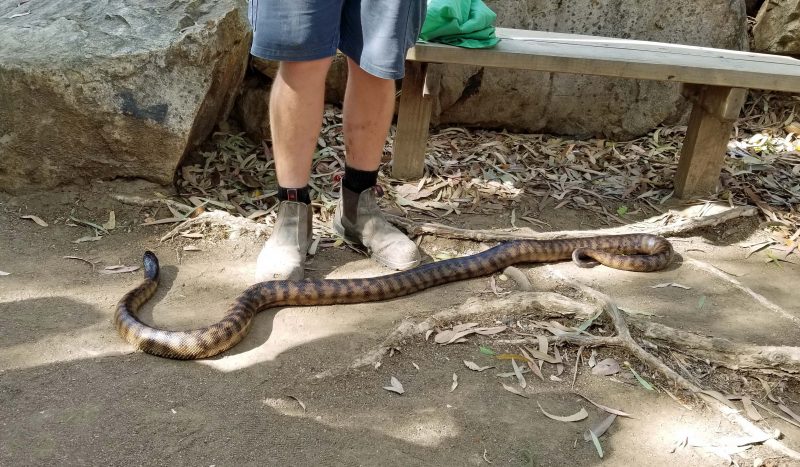Today, Ted and I visited the Billabong Sanctuary in Townsville, Queensland. It’s a tropical bushland setting and our group had a private tour with one of the rangers. I wasn’t sure what a billabong is and mistakenly thought it was an Australian animal. I now know that it’s an oxbow in a river, which describes the sanctuary’s location. A billabong lake is one that fills the oxbow. That’s not the case here.
It’s probably a good thing I didn’t put kangaroos on my Down Under checklist, because I learned today that they don’t like to go out in the heat (and Queensland is hot), so they are seldom seen except in the early morning and evening. We saw some who were moving around as we walked through the sanctuary.
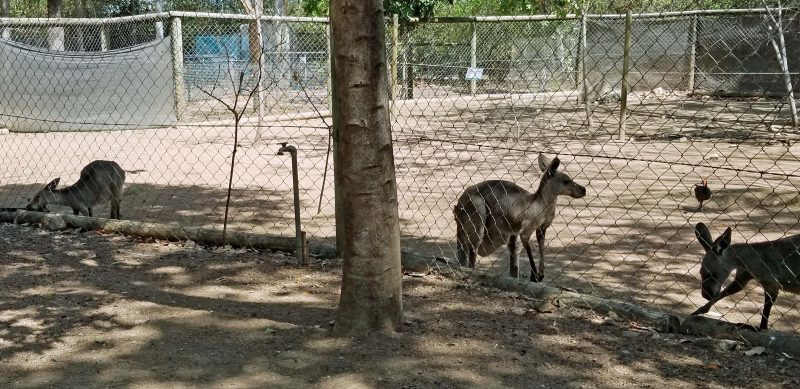
Our first stop with the ranger was the crocodile pond. The ranger provided a lot of interesting facts about crocodiles including the fact that, in Australia, if there’s warm water, there are probably crocs. There’s another adage that warns “If you’re going to camp by a stream, don’t stay two nights. The crocs will watch you the first night and attack you the second night.” Note: This is not true for southern Australia, where it’s too cold for crocodiles.
Male crocodiles can grow to 16 feet long; females only grow to 4-6 feet long. The crocodile in the photo below is about 14 feet long at a hefty 1,500 pounds. Males are usually placed with three females in the hope they will like one of them. If there is only one female and the male doesn’t like her, he will kill her. Not necessarily eat her, but kill her. Crocodiles have not changed in 30 million years. The ranger said this indicates that they have evolved to perfection and can do everything they need to do with precision and efficiency. In the photo below, the ranger is feeding the crocodile raw chicken.
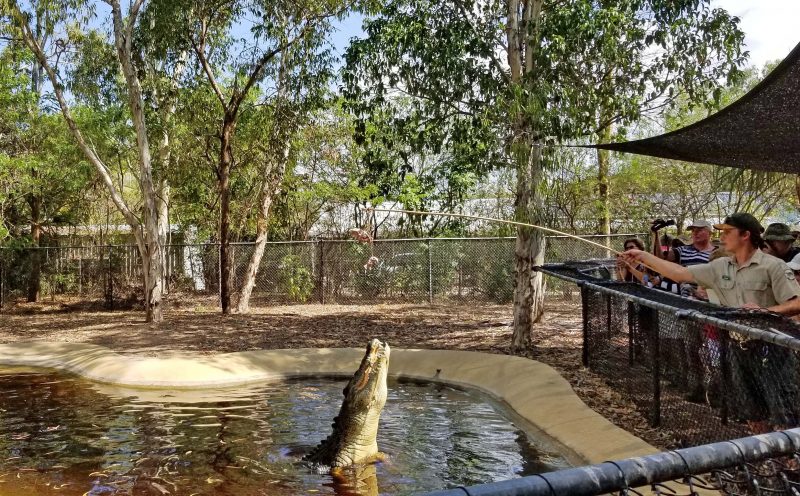
The ranger also showed us a much smaller crocodile. People were allowed to hold it, but Ted and I passed, even though its jaws are clamped shut. We’re not big fans of reptiles.

We walked by some dingos on our way to the koala stop with the ranger. This dingo is white, but some were brown or gray.
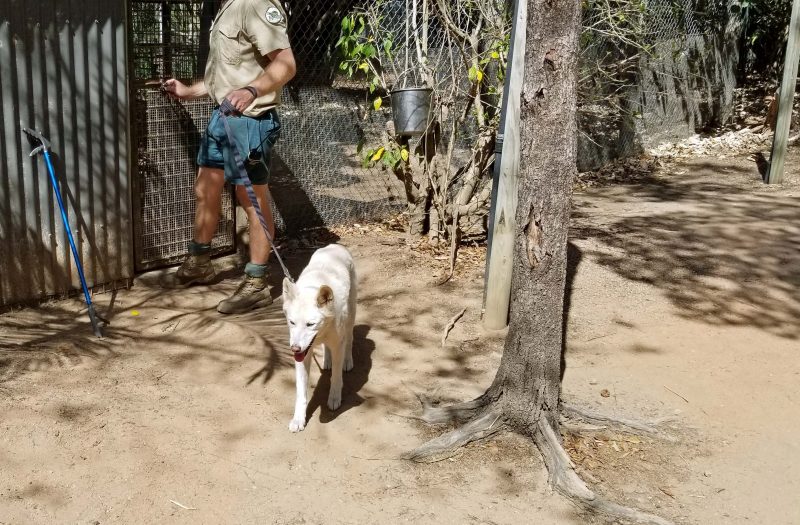
Not surprisingly, the koalas are very appealing. The ranger told us they will be extinct in the wild within 30 years. Koalas eat only the tips of eucalyptus leaves because that’s where the nutrients and the water are. They become stressed very easily, which is one of the reasons they sleep up to 22 hours / day. I don’t remember the details, but there is something in koalas’ DNA that makes them very ill and usually kills them when they become stressed. To protect the koalas, they are only available for pictures, etc. for very limited and strictly enforced times so they won’t become stressed.
There are five koalas in this picture, but it’s hard to find them. The ranger is revealing one that was hiding behind a leafy branch.
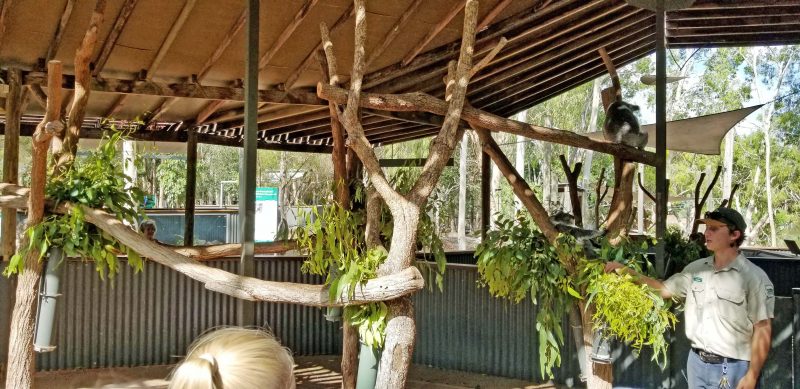
Ted had his picture taken with a koala. Its fur is very soft, like a teddy bear.

The ranger placed a cockatoo on his shoulder while he talked about the birds. He said this one will say “hello” and we should respond to it, but the bird was silent (nervous?) while we were with it.

Next: the strange wombat. Wombats live in burrows they dig with their front legs. They are extremely well-equipped to allow the back ends of their bodies to remove dirt behind them as they dig. Near their back end (hip area) is a very hard plate made out of one-inch thick cartilage. The ranger knocked on it repeatedly and the wombat didn’t even react. The ranger said the wombat was aware he was being struck, but didn’t care. When wombats are in their burrows, they use this hard part of their bodies to fill / close the opening. Attacking predators can’t hurt them while they sleep because of this cartilage plate.
Until the ranger picked it up, this lazy wombat just laid on the bench without moving (like in the bottom picture) and it surprised me to see how much bigger it was with its legs extended. Ted said the fur was very bristly and the plate was definitely hard.

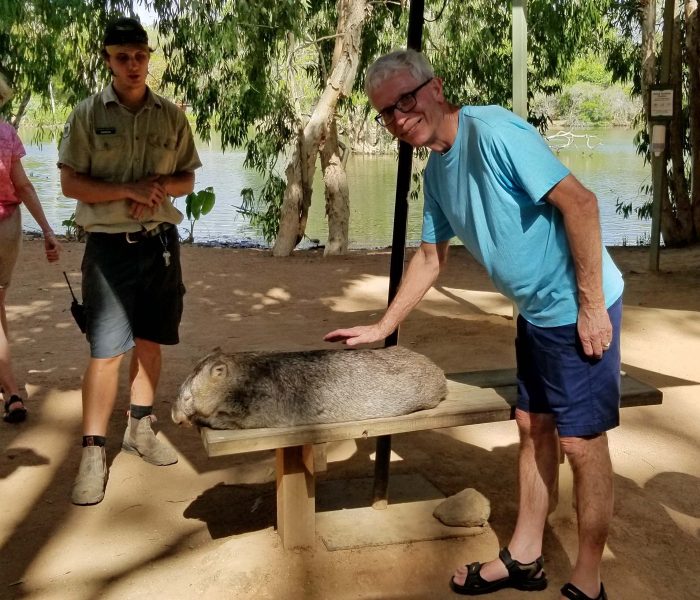
On to the snakes. Eew. Australia is home to more venomous snakes than any other country in the world. This snake is a variety of python, but not lethal. It has a black head and, when it hides, it allows its head to show because that makes it look like it’s a different variety of poisonous snake. That subterfuge keeps predators away. Neither Ted nor I volunteered to touch the snake. Again, eew. And that was the end of our time at the Billabong Sanctuary.

